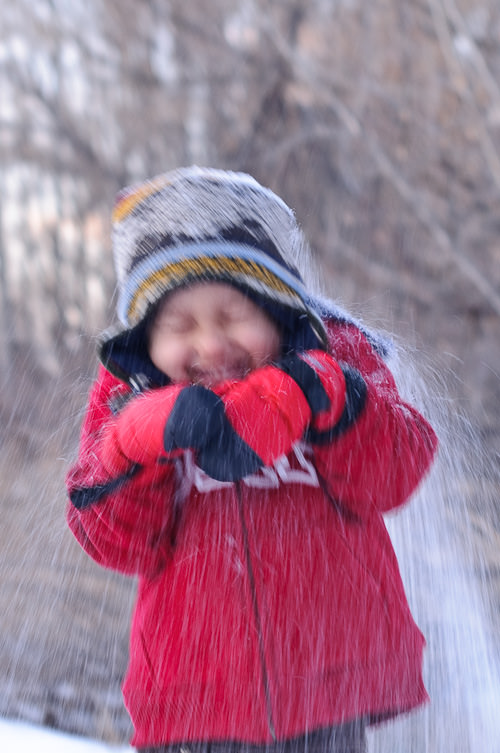What Is Shutter Speed – DSLR Tutorial
Shutter Speed – A Beginner’s Guide
Shutter Speed is one of the three pillars of photography, the other two being ISO and Aperture. Shutter speed is where the other side of the magic happens – it is responsible for creating dramatic effects by either freezing action or blurring motion. In this article, I will try to explain everything I know about shutter speed in very simple language.
1) What is a Camera Shutter?
Before reading this article, I highly recommend reading about what a DSLR is and what it consists of. Simply put, a camera shutter is a curtain in front of the camera sensor that stays closed until the camera fires. When the camera fires, the shutter opens and fully exposes the camera sensor to the light that passes through the lens aperture. After the sensor is done collecting the light, the shutter closes immediately, stopping the light from hitting the sensor. The button that fires the camera is also called “shutter” or “shutter button”, because it triggers the shutter to open and close.
2) What is Shutter Speed?
Shutter speed, also known as “exposure time”, stands for the length of time a camera shutter is open to expose light into the camera sensor. If the shutter speed is fast, it can help to freeze action completely, as seen in the above photo of the dolphin. If the shutter speed is slow, it can create an effect called “motion blur”, where moving objects appear blurred along the direction of the motion. This effect is used quite a bit in advertisements of cars and motorbikes, where a sense of speed and motion is communicated to the viewer by intentionally blurring the moving wheels.

NIKON D300 @ 50mm, ISO 200, 1/30, f/4.0
Slow shutter speeds are also used to photograph lightnings or other objects at night or in dim environments with a tripod. Landscape photographers intentionally use slow shutter speeds to create a sense of motion on rivers and waterfalls, while keeping everything else in focus.

NIKON D700 @ 40mm, ISO 100, 5/1, f/16.0
Motion can also be frozen to an extent with a camera flash, even at low shutter speeds. Take a look at this example:
It was getting dark and even after increasing the sensor sensitivity to ISO 800, the camera still needed at least 1/250th of a second to properly expose this bird. If I had shot the bird at that speed, the bird would have turned out to be blurry, since it moved faster than 1/250th of a second. I used an external flash and fired the camera at 1/250th of a second and as you can see, it helped me to freeze motion, despite having a low shutter speed for a bird in flight.
All of the above is achieved by simply controlling the shutter speed. In summary, high shutter speeds freeze action, while low shutter speeds create an effect of motion.
3) How shutter speed is measured
Shutter speeds are typically measured in fractions of a second, when they are under a second. For example 1/4 means a quarter of a second, while 1/250 means one two-hundred-and-fiftieth of a second or four milliseconds. Most modern DSLRs can handle shutter speeds of up to 1/4000th of a second, while some can handle much higher speeds of 1/8000th of a second and faster. The longest shutter speed on most DSLRs is typically 30 seconds (without using external remote triggers).
4) Fast, slow and long shutter speeds
Fast shutter speed is typically whatever it takes to freeze action. For me, it is typically above 1/500th of a second for general photography and above 1/1000th of a second for bird photography.
Slow shutter speed is considered to be the slowest shutter speed that you can handle without introducing camera shake. Some of the newer Nikon lenses such as the Nikon 70-200mm VR II have special “vibration reduction” technologies within the lens that can handle shutter speeds of up to 1/10th of a second (depending on photographer’s technique), hand-held!
How about long shutter speed? Long shutter speeds are typically above 1 second, when you have to use a tripod to get acceptably sharp images (for low-light/night photography or to capture movement).
5) How to set shutter speed
Most cameras handle shutter speeds automatically through in-camera metering. When the camera is set to “Auto” mode, both shutter speed and aperture are automatically selected by the camera. When you shoot in “Aperture Priority” mode, you set the lens aperture, while the camera automatically sets the shutter speed.
There are two ways to manually set the shutter speed:
a) By setting the camera to “Shutter Priority” mode, where you set the shutter speed and the camera automatically selects the aperture.
b) By setting the camera to “Manual” mode, where you set both shutter speed and aperture manually.
I recommend letting the camera select the correct shutter speed for you. I personally shoot in “Aperture Priority” mode 99% of the time and I let my camera calculate the shutter speed for me.
6) How to find shutter speed
Do you know how to find out what your camera shutter speed is set to? It is typically very easy to find the shutter speed. On Nikon DSLRs that have a top panel, the shutter speed is typically located on the top left corner:

If you look through the viewfinder, it should also be the number on the bottom left side of the screen. On most DSLRs, you will not see the shutter speed as a fraction of a second – it will typically be a regular number. When the shutter speed is slower than or equals to one second, you will see something like 1″ or 5″ (the ” sign indicates a full second).
For Complete Photography Course In Urdu Please Visit This Page
Courtesy : photographylife.com







